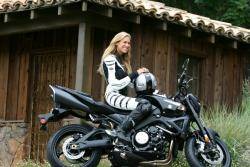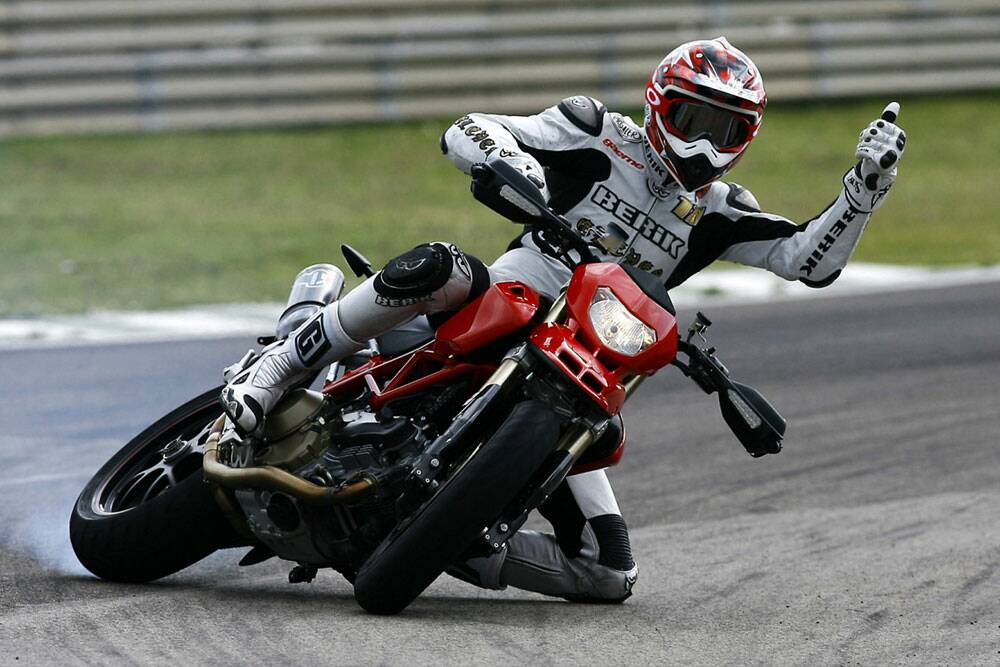Tips for Your First Month of Riding a Motorcycle – Be Prepared & Avoid Common Pitfalls
You’ve done it, you have decided you want to ride a motorcycle. Congratulations, you are in for quite the ride (haha! Oh I love my bad puns).
This article is to prepare you for your first month of riding. I remember during my first month there were many scares, many stupid mistakes, and even once where I dropped the motorcycle. This article will hopefully prepare you and let you avoid some of the errors I made.
Bike maintenance
Chances are if you are a new rider your first bike may be a used motorcycle. This is because used motorcycles are MUCH cheaper than brand new bikes. This benefit of being inexpensive comes with a few quirks. It’s best to give your new-to-you bike a once over to make sure everything is mechanically sound. It’s even better if you can have a friend who is a veteran rider to go over it with you. Maybe have them test ride it to make sure nothing is broken or mechanically dangerous.
Some typical things you should look out for that could affect your riding experience:
- Properly inflated tires: Since you are now on two wheels instead of four, it’s important that both wheels are at the proper air pressures. You can find what pressure to inflate the tires either in your owner manual, looking your bike up online, or by looking on the side the tire for the proper pressures. Proper inflation is crucial to riding because it allows you to maneuver the motorcycle properly, otherwise it may feel sluggish when turning.
- Tire tread: Make sure that the bike has enough tire tread to keep it safe. There are wear bars (pictured on there right) on all tires that will tell you when they need to be replaced. You should also looked for cracked rubber if your motorcycle tires are old. Old tires don’t stick to the road as well and are more likely to get damaged and lose air.
- Oil: Make sure the motorcycle has enough oil, and ideally change it right when you first get it. You don’t know when the last time it was changed unless you have documentation from the previous owner. Even then, it’s still a good idea to change it.
- Lights: Make sure all of the lights work. Turn signals, headlights, and brake lights!
- Cables. It’s important to check that the cables on the throttle and brake levers are in working order. You don’t want either of these getting stuck. That could result in braking you don’t want, or an unexpected jolt in speed!
Getting the bike home
If you don’t have much riding experience, I always recommend that you have an experienced rider drive your bike home for you. If that isn’t an option and you have a pickup, you could always load it into the back. I’ve loaded bikes in the back of trucks using all sorts of methods. From attempting to lift it up with a couple of strong guys, to making ramps out of piece of wood or ladders that might be laying around.
One of the more dangerous things you can do is try to get a motorcycle onto a tall pickup bed using a narrow ramp. They sell inexpensive ramps to do this, and I’ve used this method 90% of the time when transporting motorcycles. If you do decide to use a narrow ramp then make sure you have multiple people keeping everything balanced as you push the bike up the ramp. A much better option might be to get something like the Sharkkage which is a much wider ramp that attaches to a truck bed.
You can also rent a motorcycle trailer pretty easily. I know my local Uhaul has the option of renting a motorcycle trailer for a day. Keep in mind you will still need a truck with a trailer hitch.
Proper training
There are many different ways to learn to ride a motorcycle. You can have a friend teach you, you can take the DMV test and learn from the book, or you can take a motorcycle training course from a safety organization. Statistically, you are much more likely to be in a serious motorcycle accident if you’re only training has come from a friend or family member. You are much safer and better equipped if you take a training course from a safety school like the Motorcycle Safety Foundation, or MSF.
In some areas the MSF may not exist. For example, in Idaho there is another safety organization called STARZ that provides the same type of training that MSF offers. Another added benefit that most states in the USA allow is that if you take a motorcycle safety course through MSF or STARZ then you are able to waive the riding portion of the DMV test. Then all you have to take is the written part, which makes things much easier.
Gear up

I typically recommend everyone wear a full face helmet, a motorcycle jacket, riding gloves, and sturdy boots that cover the ankles. That is the bare minimum to keep you safe! I also recommend checking out different riding pants. There are over-pants that you can easily slip on over your normal clothes and there are also jeans that come with kevlar sewn into the impact zones. I’ve had a couple crashes at low to mid speed and I have thankfully been fully geared up every time. If I hadn’t been, I would be missing parts of my face and parts of my hands and knees!
Gearing up doesn’t have to be expensive, either. You can buy a jacket, gloves, and helmet for around $300 total. They won’t be the top of the line, but they will keep you safe and save you a lot of money in hospital bills if you ever get into an accident. That is very important because most riders get into an accident at some point during their riding career.
Surface streets and freeways

Eventually, you will need to get on a freeway or highway. These are high speed and can be quite nerve wracking the first time you go on one. Riding 65mph on a motorcycle is MUCH different than riding in a car at that speed. You will notice the wind, the road noise, the bumps, and how unprotected you feel being out in the open. Although these things are scary at first, they soon become natural and you begin to enjoy them. Soon enough that feeling of vulnerability you experience from being “out in the open” will change into an enjoyable feeling of freedom!
Common mistakes
Releasing clutch too fast and killing the motorcycle. We’ve all done this, especially as new riders. The key to remember is not to panic, to calmly restart the bike, and then to try again calmly. It’s embarrassing, but an experience you will laugh about later.
- Shoe laces catching on motorcycle pegs. I learned this one from experience, but worst of all I learned it while riding a friend’s bike. I pulled up to a red light and when I slowed down and tried to put my foot down, my shoelace was caught and so the bike and I tipped over. That is why I now recommend wearing motorcycle specific boots that don’t have laces. If you do have laces on your boots, make sure they are tucked in so they won’t catch on a peg and prevent you from putting your foot down.
- Shifting into neutral instead of 2nd gear. You will discover this happens when your engine begins to rev really high for no reason and you aren’t going any faster. Just another simple click up on the shifter will firmly place you in 2nd gear.
- Running out of gas while riding. Newer bikes will have a low-fuel indicator light. On older bikes, there may be no such light. Instead they will have a reserve fuel tank. The way you will know to switch to the reserve tank is when your bike starts losing power and starts to die. If you are quick, you can reach down to the fuel petcock and switch it to reserve before it complete dies. Then you have about 20-30 miles before your reserve tank runs out.I’ve never had my reserve tank run out completely, so I’m not quite sure how long it will last on your average motorcycle. The best thing to do is to reset your odometer when you have to switch to the reserve tank, then have a friend follow you in their car with a gallon of gas and ride until the bike dies. You will then know exactly how long you have when you switch to reserve. To be on the safe side, I always head to a gas station right when I switch from my main tank!
At the end of your first month:
Congratulations! If you survive the first month with both your body and motorcycle intact, then you are ahead of the game. There are many riders that crash in their first month by riding above their skill level, getting a bike that is too powerful for them to handle, or by not having the proper training.
Motorcycles can be a fantastic way to enjoy your weekends and a great way to meet new people. Keep riding safe, and keep the rubber side down.


